–on the Guyanese society
By Ravena Gildharie
LESS than five years since Guyana and the Caribbean Community (CARICOM) committed to reparations for slavery, much has been done to build a compelling case for compensatory payment from those who enforced the Trans-Atlantic Slave Trade. Increasingly, as reparation activists pursue their agenda, the undertaking is assuming a wider role to promote history, cultural identity and development among Africans and other groups, despite trekking on very sensitive grounds.
In Guyana, the National Reparations Committee is spearheading a busy schedule that encompasses claims for reparatory justice with focus on, among other issues, land ownership; youth and entrepreneurial growth; communal cohesion; remedies for cultural losses; research and documentation of history; and education and awareness for a national ‘buy-in’ of the reparations concept. 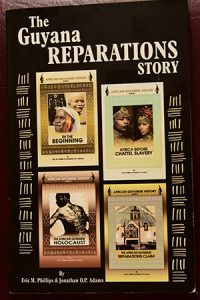
The local body was established in 2013 after CARICOM Heads of Government agreed to advance the reparations process.
Representatives from each National Committee sit on the CARICOM Reparations Commission (CRC), which aims to establish the moral, ethical and legal case for the payment of reparations by the governments of all the former colonial powers, and the relevant institutions of those countries, to the Caribbean and its people for the following crimes against humanity:
Native genocide, the Trans-Atlantic Slave Trade, and a racialised system of chattel Slavery.
Earlier this month, the Commission presented a status report to the regional leaders, who reaffirmed their commitment to the movement.
Chairman of Guyana’s committee and regional representative, Eric Phillips, said the local body meets every Thursday with about 30-40 members at the Museum of African Heritage in Georgetown to review, discuss and implement its work programme. The committee has planned a Reparation Youth Rally and Relay, beginning at the 1763 Monument and culminating at the National Park, for the launch of Emancipation 2017.
A booth with exhibits, books, fliers and other reparation materials would also be at the National Park during the August 1 observances.
A special television programme is slated for August 29 on the State-owned National Communications Network (NCN) with a panel of historians and activists, and a special focus on youth involvement. There will be a live audience, where the youths can ask questions and join the national reparations discussions.
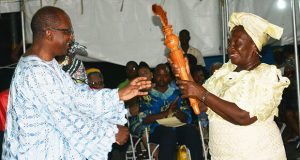
Other televised programmes are planned, and according to Phillips, all are intended to share with the public the progress, ongoing activities, and plans of the National Committee.
These are in addition to ongoing community outreaches and youth entrepreneurial conferences being held countrywide. There have already been four outreaches for 2017 in Berbice, Linden, Essequibo and East Bank Demerara.
LAND OWNERSHIP
Cultural development and land ownership and its value as a means of generating wealth have been among main topics discussed in the communities. Several others are planned for later this year.
Further, there’s to be a lecture series at the National Library on reparations led by Dr Rudy Guyan, while an additional 10, 000 copies of the first volume of the ‘Guyana Reparations Story’ would be printed and distributed to students and others.
The publication, a compilation of four books that capture the missing pieces of slavery in Guyana and makes a case for reparative justice, was launched last December.
The first book, ‘In the beginning’, promotes Africa as the birthplace of human existence, while Book Two focuses on ‘Africa before Chattel Slavery’, with examples of African life, significance and achievements as well as contributions to Mathematics and technology.
Book Three, ‘The African Guyanese Holocaust’, notes the building of Guyana on the blood of over 450,000 Guyanese African slaves, while the last book is titled, ‘The African Guyanese Reparations Claim’.
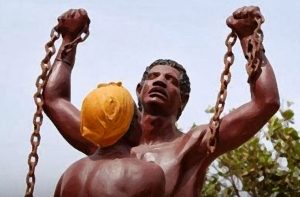
This collection lists several claims for reparations, and states that it is “the process of repairing the consequences of crimes committed, and the attempt to reasonably remove debilitation effects of such as crimes upon victims and their descendants.”
In an exclusive interview, Phillips said that efforts are focused on finalising the book and claims, after which the Committee would write to the Guyana Government seeking a resolution in the National Assembly on reparations for African slaves and their descendants. The committee plans to plead, too, for the establishment of a national commission to research and document the history of Guyana, as Phillips claims that the group’s research uncovered several pieces of historical and important information previously undocumented, which can ultimately affect reparatory claims in Guyana and the region.
One of the claims has to do with land ownership, but the issue had raised some concerns among the Indigenous Peoples, who own about 13.9 per cent of Guyana’s lands.
According to Phillips, the Commission of Inquiry (COI) on Land Ownership would begin work in September to investigate these and other land matters.
He highlighted that the Amerindians asked for their land ownership matter to be dealt with separately.
Phillips observed that “most of the lands bought by the freed Africans are still under communal ownership, and this is an issue, since many individuals, including descendants, can’t use the land as collateral for investment.”
The COI would tackle this matter, however, Phillips noted that reparatory justice is beyond payment and compensation, as there are both physical and emotional aspects to it. The latter, he pointed out, deals with the effects of slavery; the culture that was taken away from Africans and the current lack of cohesion among the group which contributes to the national divide, something Phillips feels still exist.
With this in mind, he said the National Committee, while seeking to resonate its message, is promoting cohesion among Africans and with other groups.
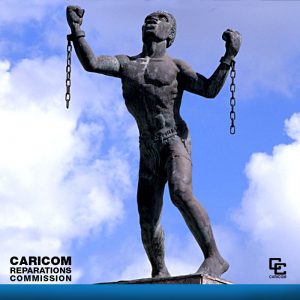
The National Committee was intended to ensure Guyana’s representation in CARICOM’s reparation debates, discussions and negotiations; and to serve as well-rounded groups with the experience and knowledge to engage in the complex process. The committee has a mandate to ensure “full and informed consultation” with all the stakeholders in Guyana, and to perform research, and compile an international library of documents that are relevant to the reparations process. Further, it has to interact with representatives of all Caribbean Reparations Committees.
REPARATIVE JUSTICE
Meanwhile, Guyana is one of four countries that has completed it Terms of Reference mandated by the region. These addressed corrective history of Africans, the inequality that stemmed from slavery, and the mechanisms that still perpetuate such disparity in today’s society, according to the Guyana Reparations Chairman.
Speaking days ago at the National Rastafarian Conference at the University of Guyana Turkeyen Campus, President David Granger stressed reparative justice as being necessary and to be pursued steadfastly.
He made it clear that “reparative justice is not a ruse for development finance or international handouts (but) a demand aimed at ensuring recompense for crimes against humanity, enslavement and native genocide, and for the atrocities of indentured immigration.”
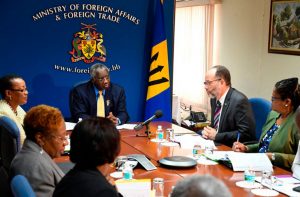
Guyana and other Caribbean nations maintain the call for Britain to make due payments to descendants of African slaves traded between the 16th and 19th Centuries. When they met earlier this month in Grenada, the regional leaders were informed that most of the European nations had responded in the same way to letters sent from the Caribbean stating claim for reparations. The responses have not been endearing to the ears of the Caribbean heads.
Barbadian Prime Minister Freundel Stuart, who heads the Regional Sub-Committee on Reparations, says the body is likely to meet sometime in September and decide on how to treat the replies from Europe.
CARICOM representatives have vowed that if their pleas are ignored, they will take each individual case to the International Court of Justice in The Hague.
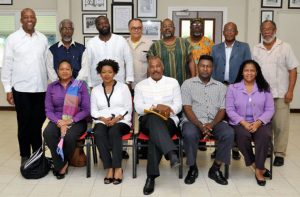
Back in 2014, Caribbean leaders approved a 10-point plan to seek reparations from the former slave-owning states of Europe. It seeks a public apology as opposed to “statements of regrets” issued by some nations; repatriations underscoring the legal right of the descendants of more than 10 million Africans, who were stolen from their homes and forcefully transported to the Caribbean, to be able to return to their homeland; an Indigenous Peoples Development Programme to rehabilitate native survivors; cultural institutions to express the stories of victims and descendants; attention to the Caribbean’s public health crisis where chronic diseases stem from nutritional experience, emotional brutality and stress of slavery, genocide and apartheid; eradicating illiteracy within the African community; an African knowledge programme to teach descendants about their roots; psychological rehabilitation for healing within African populations; technology transfer for greater access to world science and technology; and debt cancellation to a address the “fiscal entrapment’ facing Caribbean government emerging from slavery and colonialism.
When the CARICOM Commission meets later this year to review its strategy, it would also launch the Reparations Research Institute in Jamaica.



.jpg)









